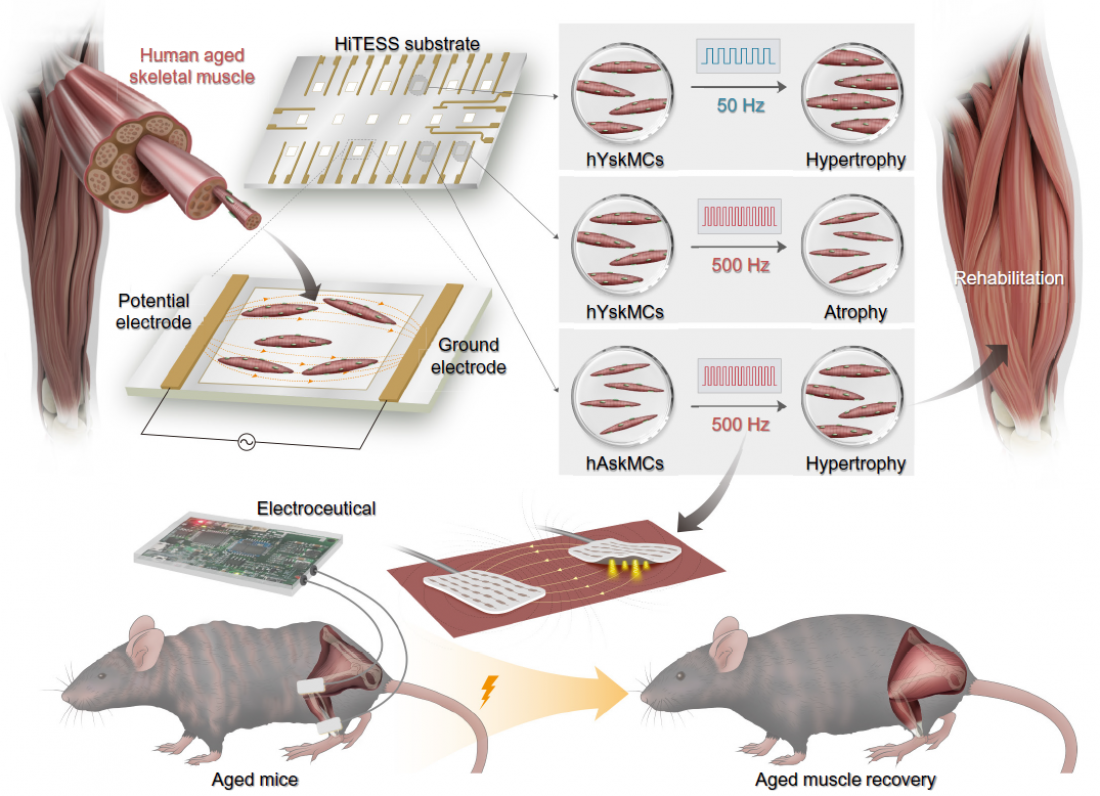□ A team led by Professor Minseok Kim at DGIST's (President Kuk Yang) Department of New Biology has developed the world's first bioelectric medicine source technology to treat senile sarcopenia, a disease that currently has no cure.
□ Sarcopenia is a disease that causes a decrease in muscle mass as people age, resulting in muscle loss as well as deterioration in immunity and basal metabolism. It is also associated with chronic diseases such as diabetes mellitus and cardiovascular illnesses; thus, reducing the survival rate of patients. Various drugs to treat sarcopenia have been proposed by major international pharmaceutical companies; however, to date, no drugs have been applied in clinical practice owing to side-effects or low effectiveness.
□ Professor Kim and his team conducted research using electrical stimulation as a treatment method for sarcopenia. They first developed an ultra-precise biochip-based high-throughput electrostimulation screening platform that utilized aging muscle cells obtained from older adults. Through this platform, they systematically identified specific electrical stimulation conditions that induce the regeneration of aging muscle cells and discovered, for the first time, that aging reversal is possible under certain stimuli. Furthermore, they identified differences in the optimal stimulation conditions for regenerating young and aging muscles.
□ Based on the aforementioned stimulation conditions, a six-week stimulation treatment was conducted involving aged mice, during which time increased muscle mass and quality as well as improved contractile force were confirmed. Enhancement in both muscle formation and differentiation functions through next-generation gene sequencing analysis was also confirmed.
□ Professor Kim noted: "The number of patients with sarcopenia has exploded recently due to restrictions on social activities owing to the COVID-19 pandemic and aging of the world's population." He then highlighted the significance of his team’s findings: "This research is significant because it confirms, for the first time, the potential of applying bioelectric medicine to treat sarcopenia, a disease for which there currently is no cure. We also identified the optimal electrical stimulation conditions for muscle recovery as a function of age, which may lead to a paradigm shift in the development of personalized electrotherapy treatments.”
□ This research was supported by the National Research Foundation of Korea (NRF), and the findings were published in the prestigious journal Proceedings of the National Academy of Sciences (PNAS) in August, 2023.
- Email address of the correspondence : [email protected]



